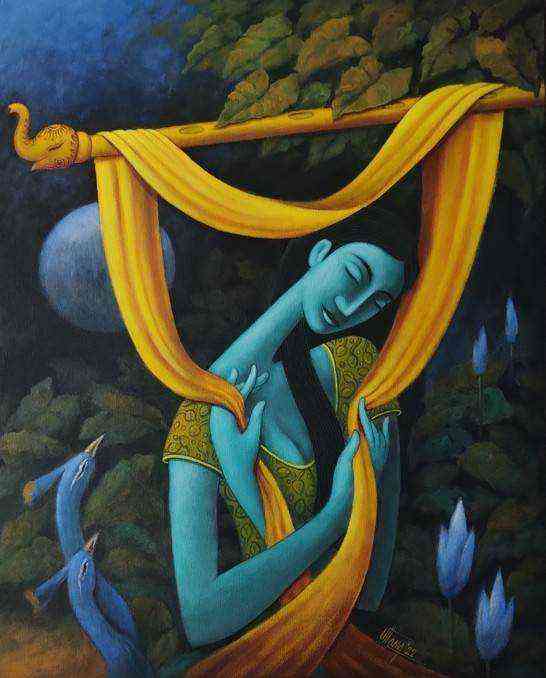Acrylics are indeed one the most versatile paints to work with. As quoted by Corrine Loomis-Dietz, an artist from Salem, “Acrylics do not need to be flat, matte, muddy and boring! Golden mediums, gels and grounds are the secret beauty of painting with this extremely versatile medium.” But first, what makes acrylic paints comparatively simpler to use? They consist of a formula that dries very quickly and can be used straight from the tube, or thinned down with water.
Acrylic paint is pigment suspended in a polymer emulsion and acrylic mediums are made with the same emulsion base as the paint. When these two are mixed, there is no fear of paint cracking as both dry at the same rate. This is one reason why acrylic mediums are so popular with the artists.
The main characteristic that is expected of a medium is to either slow down or speed up the pace at which the acrylic paint dries up. There are as many as eight different mediums that can be used to enhance the effects of acrylics.
Let us talk about a few exciting techniques of acrylic painting.
1.Gel Medium

For a dramatic textured effect, gel mediums can be mixed with the paint to thicken the mixture and add extra lustre to it. This adds a new dimension to your painting, almost making it seem dynamic in nature. This technique, known as the impasto technique, is when paint is used directly from the tube to create a thick, layered surface. This medium can be coupled with other mediums such as modelling paste or a glazing medium, ensuring your artwork stands out from the rest.
2.Glazing Medium

Layering is one property of the acrylic paints that is particularly popular. They dry very quickly and leave a water-resistant surface. This allows for painting one transparent colour over the other without too many hassles. Thinning of the colour can be done by using this medium, which comes in a satin and a gloss sheen.
Fancy Feathers by Cher Anderson is one such painting that is renowned for having several layers of very thin washes of colour that lends to its realistic image. This is called the glazing technique and is used to add the finishing touches for a painting, thereby sealing it. Behold the luminous quality of your artwork now!
3.Texture Medium

One of the most popular texture mediums is the modeling paste which focuses on changing the composition of the paint. To take the impasto technique a step further and create a three-dimensional effect for your painting, mix the modeling paste, also called molding paste, with the paint and wait for it dry. This mixture can now be painted, sculpted, carved or sanded, as you please! Marne-Rose Edge, a Vancouver based artist, famously employs this technique in her painting, The Unknown, to set the texture of her base
4. Retarding Medium

As the name suggests, the retarding medium facilitates the slow drying time of the acrylic paint. A texture, similar to that of an oil painting, can be produced by making use of this medium or otherwise known as a retarder. Blending of colours takes the front seat here, which is quite a tricky process with acrylics but gets easier to do with the help of retarders.
April M. Rimpo, a contemporary water media artist from Balitmore, makes use of the easy blending property of acrylics to build upon the darker areas of her artwork, Lanterns. She creates her own blacks and greys by blending colours, which gives a much richer result than when the colours are directly used from the tube. Acrylics were taken seriously as an artistic medium since the 1950s, which is considerably recent.
This can be attributed to the fact that the Pop Art Movement which was spear-headed by artists such as Andy Warhol and Jasper Johns, used acrylics as their primary medium to work with. Notwithstanding the late entry into the art world, these paints have gone on to become the most sought-after paints by artists worldwide. The unique selling point of acrylic paints would be its flexibility. In the words of Alabama based artist, Johanna Littleton, “Acrylics can be used in a watercolour, acrylic or oil style on nearly any surface. They can be vibrant or muted, thin or thick paint, and they don’t smell.”